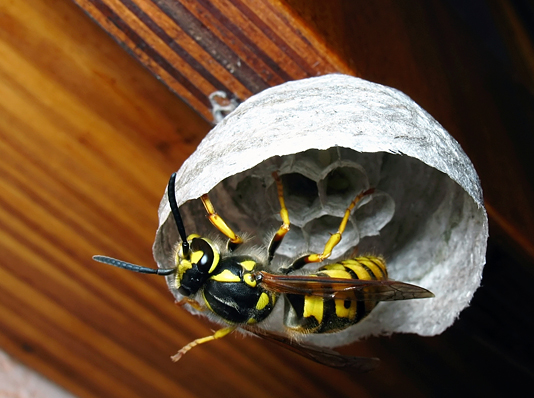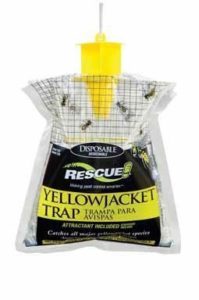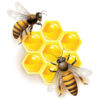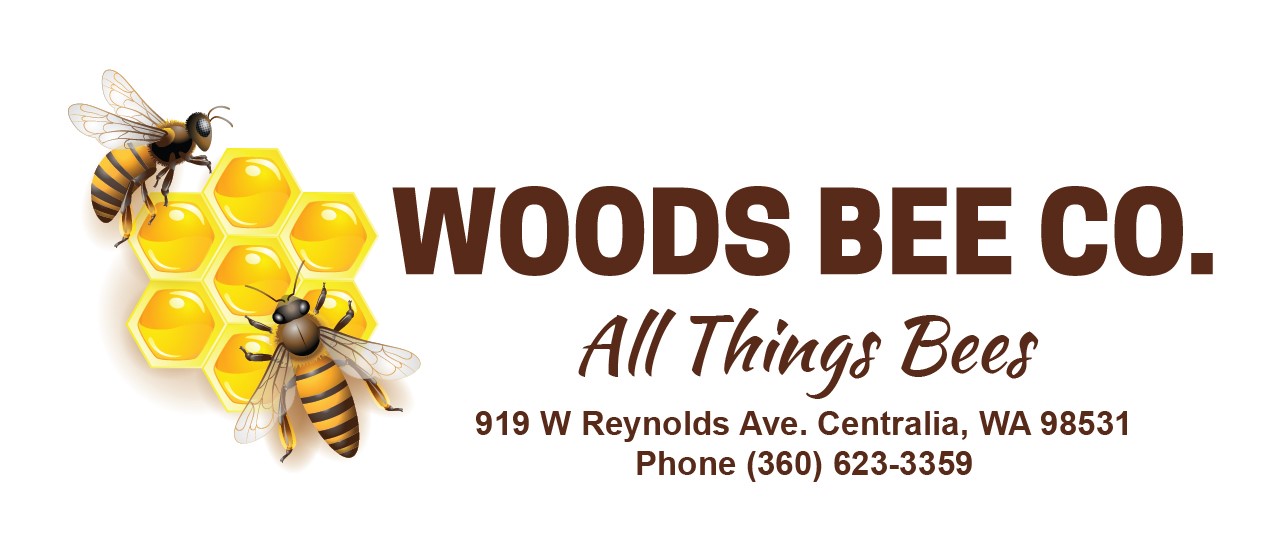Information

Life Cycle of the Yellow Jackets.
Have you ever wondered how to eliminate those pesky yellow jackets before they become a problem? As many of you have found out last year, a few yellow jackets or wasp nest can annihilate an entire bee hive in as little as a week.
To solve this problem, we must understand the life cycle of the yellow jacket queen. A fertilized yellow jacket queen hibernates through the winter using natural resources like trees, stumps, rock piles, hollow logs and even stacked fire wood for shelter. Although these are the most preferred types of shelter, the queen will also shelter in man-made structures.
The queen will hibernate the entire winter then emerge in the spring to build a small paper nest by chewing plant fibers. After she builds a portion of her nest, she lays her first batch of eggs. Spring is the time that you need to put your yellow jacket traps out because after the eggs hatch into larvae, the queen will leave the nest to find insects, fish, or any meat to feed her young. Because none of the newly laid female yellow jackets are fertile if the queen can be trapped and killed this will reduce the number of yellow jackets in your area in the summer.
The Queen can generate up to 5,000 workers. To make matters worse, if the queen produces young fertile queens, these new queens will leave the nest mate and create her own nest thus duplicating the first Queens’ effort.
Here’s the good news, because we normally have a cold and wet spring the Queens’ cycle normally begins in mid to late March. During this time there are not too many insects or picnics out, so this is a prime time to put your traps out.
In the past, I have used all kinds of yellow jacket traps, and the one that I have had the most success with is the “Rescue Yellow Jacket Trap” that uses water. This trap works best because it generates a longer, stronger smell than its dry counterparts.
Keep in mind that while trapping a few queens might not seem like much, their absence will greatly reduce the number of yellow jackets that you have in the summer.



Noe Aguiniga
I agree with Alan, in using this type of trap I had a lot of success with them, however I think the manufacturer should lower the price
Alan Woods
Thank you Noe
Nathan
Will the yellow jacket trap work with bald face hornets. Lost my hive to them in october. Left me with 70 lbs of honey in the hive and about 50 bees when I got back from a week long trip. Was fighting them all summer. Could not find the hive.
Alan Woods
Only if the trap specifies Bald Face hornets. However if you are have trouble with yellow Jackets or hornets use a robbing screen. They work great for those problems.
Noe Aguiniga
I killed the first Yellow Jacket of the season with my hive tool, they are out and about set up your traps!
A Savage
This year has been nuts for yellow jackets. I tried your hamburger/flea med treatment. They didn’t go for the hamburger at all, just the attractant. So I tried another trick….canned cat food with your method of flea meds. Along with 2 traps nearby. The wet trap worked much better than the dry refillable trap. I was amazed at the amount of dead YJ. And within 2 days of using the cat food method, only saw a handful of YJ. Thanks for the tips!! Will be on it next year in Spring 😉
Randy Johnson
My colonies were decimated in the late summer /early fall of 2019. I had 8 colonies, and the yellow jackets took 5 of them within ten days.
I live in a heavily brush covered area, so finding the nest isn’t going to work….
I’ll try the traps you’ve suggested this year !
Alan Woods
Please put your traps up early spring to catch the queen.
Randy Johnson
Thanks, Alan !
Just ordered traps, to be ready for March !
Alan Woods
You are welcome.